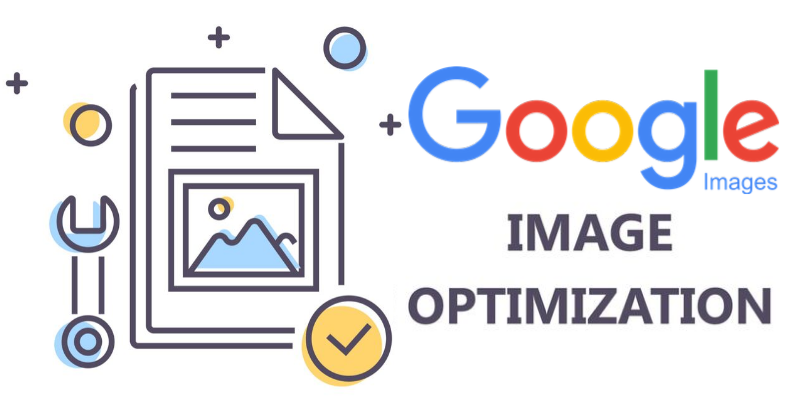Google Images is often overlooked by SEO professionals. All attention is usually given to Google Web results. But in today’s competitive digital environment, a website must seize every opportunity to attract additional visitors. Image Search is not only an additional channel but an interesting opportunity to make your website even more visible. The chance to increase traffic via Google Images should definitely not be ignored. However, the benefit of extra visitors must be weighed against the risk of others plagiarising the images on your site and the costs of providing unique images.
Image Optimisation
To get your picture files shown in Google Image search results it is necessary to optimise both the images and the page itself. This makes the process easier for the search bots responsible for producing image results. You can optimise your images by implementing the following steps:
1. Unique images
Pre-purchased images are much less likely to be noticed. Just as Google chooses not to show identical texts from different sites in its search results, it also does not like to show more than one of the same photograph. If you use the same run-of-the-mill images that appear on countless other (competitor) sites, why on earth would Google Images select your image above that of other sources?
For webshops, in particular, this is not great news. Webshops often use supplier product photos, as do all their competitors. Taking unique pictures of every product can be a costly affair, which is why this type of enterprise is perhaps not the best for Google Image optimisation techniques. For other business types, take your own original, unique images whenever possible.
2. File size
The lower the number of kilobytes, the better. This is because the smaller the image, the faster it loads and as a consequence, the faster your webpage opens. Google uses loading speeds as a ranking factor. While it is possible to use multiple smaller images on your site and so leave the speed of your site uninfluenced, the page will not benefit visually. Finding the correct balance between image content and loading speed is important, especially in the case of mobile devices.
Correct image characteristics are not the same across the board. These characteristics are influenced by software and server choices. The best choices when using imagery on your site are to:
a. Keep images small – preferably under 100kb
b. Make sure compression quality is high using a well-developed compression tool
c. Use JPEG for photographs which will compress to a smaller but higher quality format
d. Use PNG for transparent images such as logos
e. Use GIF for graphics smaller than 10 x 10 pixels
f. Avoid TIFF and BMP
g. Ensure your webmaster tools work well with an image sitemap
3. Image file name
Always give your image files a name that says something important. Instead of simply listing your double duvet cover as dduvet1000.jpg call it double-duvet-cover-satin-red-1000.jpg. In this way you help the search engine bots know exactly what the image describes, and the speed at which they recognise your image is also significantly increased.
4. Alt attributes
The most important function of an Alt tag is to display a piece of text when the image cannot – for whatever reason – load. This is considered part and parcel of on-page SEO optimisation. Particularly in the case of emails, using an Alt tag is common practice. The recommended length for an Alt tag is 4 to 5 words with a maximum of 125 characters. It is always preferable to use a keyword in the alt tag.
5. Title tags
The title tag ensures that text is displayed when you hover over an image with the mouse. Google currently attaches much less importance to this tag than to the Alt tag, but this preference may change in the future. The addition of a title tag certainly doesn’t do any harm. It gives the webpage visitor a little bit of added value – a touch that Google always appreciates.
6. Webpage relevance
The relevance of the accompanying webpage is a determining factor that decides whether images are included in search results or not. Google also views any text placed in the vicinity of the picture. This means the search bots better interpret the context. If text and image do not match these bots become confused. Always ensure that there is a connection between any surrounding text and the image. An Instagram picture which does not include any text is much less likely to be included in Google Images results than the same image on a page containing a full and appropriate description and plentiful reviews.
7. Use Schema mark-ups
Structured Schema mark-up allows you to provide additional information about page elements. You can add very precise content about a photo such as the name of the photographer, the place where the photo was taken or when that image was taken. Search engines will reward you for your hard work. You can find out all the details on schema.org.
8. Face recognition API
Thanks to machine learning Google is becoming much better at recognising exactly what is being depicted on any image. This quality does not replace the above SEO guidelines; however, many online tools will analyse your images according to the same principles as Google.
A ‘Free’ Channel for SEO
Google Images is an additional, often ignored channel that can help bring more visitors to your website. In order to have your website’s images displayed in a Google image search, it is important to optimise not only the image but the page, too. This is achieved through paying attention to tags, file names, image size and format and – most importantly – through the use of images unique to your website. The single disadvantage of this free channel is the opportunity for less scrupulous developers to use your images for their own creations. This can be somewhat restricted through placing your logo as a watermark within the image, implementing advanced digital barcoding or adding your copyright to the metadata. These techniques can often prevent the opportunistic theft of unique images and further increase your company photograph SEO rankings on Google Images.


 1300 353 700
1300 353 700 info@magiknewmedia.com.au
info@magiknewmedia.com.au












